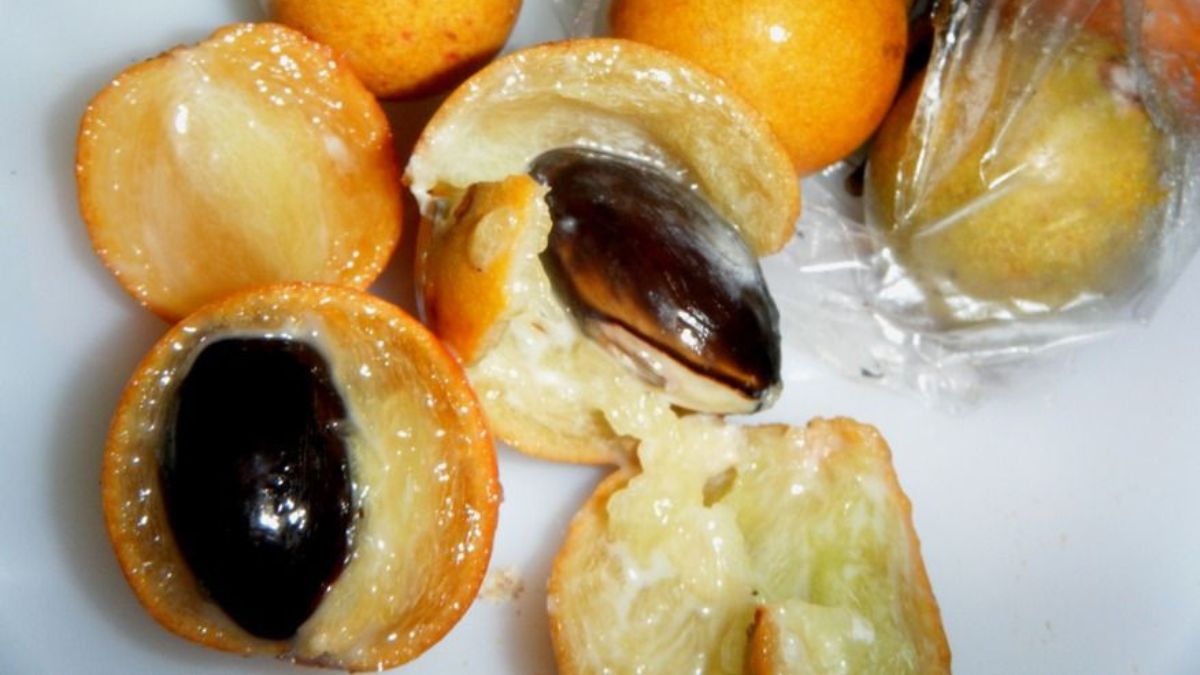Short Answer: Balata fruit is a type of fruit that comes from the balata tree. It has a sweet, white pulp with a musky malty flavor and a grainy texture. It is rich in vitamin C and antioxidants and has anti-inflammatory and antibacterial properties.
Balata fruit is a type of fruit that comes from the balata tree.
It is also known as bulletwood, ausubo, massaranduba, quinilla, or cow-tree.
It is native to South America, Central America and the Caribbean.
Balata fruit has a small brown skin and a large black seed surrounded by sweet, white, juicy pulp. It has a grainy texture and a musky malty flavor.
It is usually eaten raw or made into juice or jam.
Balata fruit is rich in vitamin C and antioxidants and has anti-inflammatory and antibacterial properties.
It can help prevent scurvy and infections and improve wound healing. Because vitamin C is essential for collagen synthesis and immune system function.
It can also boost energy and mood because it contains natural sugars and phenolic compounds that can modulate neurotransmitters.
However, balata fruit may also have some drawbacks.
It can cause allergic reactions or digestive problems if consumed in excess or by people who are sensitive to latex.
Because balata fruit contains latex, which is a natural rubber that can trigger immune responses or irritate the mucous membranes.
Therefore, it is advisable to consume moderately and consult a doctor if you have any latex allergy or intolerance.
You can eat one or two balata fruits per day.
You can prepare balata fruit by cutting it open and scooping out the pulp with a spoon.
You can also blend it with water, sugar and lime juice to make a refreshing drink.
You can buy balata fruit from local markets or online vendors.
You should look for fruits that are firm, heavy and free of cracks or bruises when choosing balata fruit.
You should avoid fruits that are soft, shriveled or moldy as they may indicate spoilage or contamination. Because balata fruit has a short shelf life and is prone to fungal infections.
You can store balata fruit in a cool and dry place for up to a week.
Don’t expose it to heat, moisture, light or air as it may affect its quality, shelf life and safety. Because balata fruit can lose its flavor, color, nutrients and freshness if exposed to unfavorable conditions.
Finally, remember, balata fruit is a delicious and nutritious tropical fruit that can offer many health benefits.
But it can also cause some problems if you are allergic or intolerant to latex. So be careful and enjoy it in moderation.


A pleasant good day to you Doctor, May I ask why the daily recommendation to eat this fruit is only one or two per day? I would like to know what would happen if you consumed more than the recommended amount per day.
Hello, thank you for your comment and interest in balata fruit. Balata fruit is a delicious and nutritious tropical fruit that can offer many health benefits.
But, balata fruit may also have some drawbacks. It can cause allergic reactions or digestive problems if consumed in excess or by people who are sensitive to latex. Because balata fruit contains latex, which is a natural rubber that can trigger immune responses or irritate the mucous membranes. Therefore, it is advisable to consume moderately and consult a doctor if you have any latex allergy or intolerance.
You can eat one or two balata fruits per day, depending on your individual needs and preferences. You can prepare balata fruit by cutting it open and scooping out the pulp with a spoon. You can also blend it with water, sugar and lime juice to make a refreshing drink.
I hope this answers your question and helps you enjoy balata fruit safely and healthily. If you have any further questions or feedback, please feel free to contact me. Have a great day! 😊
Yes I know this fruit I have right now lol
Good article tho
Thank you 🙂